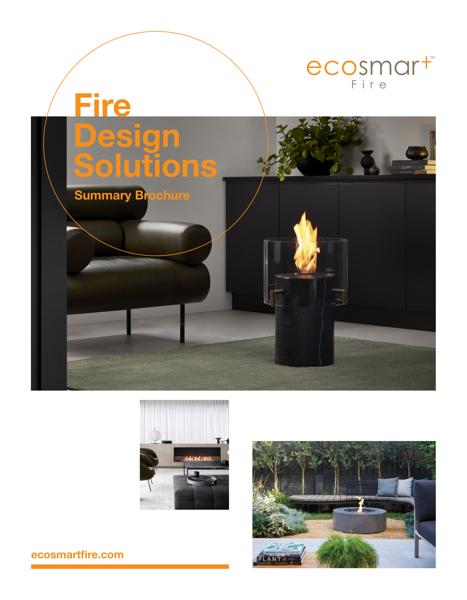Loading image...


Create an instant talking point
Because bioethanol is clean-burning, EcoSmart Fire models do not need a chimney or a flue, or a utility connection – offering the ultimate in design simplicity and flexibility.
Whether you're creating a custom fireplace feature, renovating an existing fireplace, or looking for an out-of-the-box solution, we have an ethanol fireplace to suit your needs.
You May Also Like
Learn More
Ethanol Fireplaces
Ventless Fireplaces
FAQ's
Can I convert my existing fireplace to bioethanol?
Yes, you can easily convert your existing fireplace to bioethanol using EcoSmart's VB2 burner, Heritage Grates, or Fireplace Grates. These products transform traditional wood-burning fireplaces into clean-burning bioethanol fires within minutes. Just ensure any gas connections are professionally disconnected first for safety.
How do ethanol fireplaces work?
EcoSmart Fire’s ethanol fireplaces are self-contained, burning bioethanol fuel that is housed within the stainless steel container. A flame regulator controls and stabilizes the flame. With a designated filling area, and easy shut-off mechanism, you can ignite the flame and turn it off in a matter of seconds.View this quick demonstration video to help illustrate the process.
https://youtu.be/OH5uFuAJ2Hg
Are ventless fireplaces safe?
Ventless ethanol fireplaces are safe when properly installed and operated according to manufacturer guidelines. EcoSmart Fire's bioethanol fireplaces meet rigorous safety standards including UL 1370-16 and EN16647 certification. Always ensure sufficient room size and follow all safety protocols.
What are the pros and cons of ventless fireplaces?
Ventless ethanol fireplaces provide outstanding installation flexibility, requiring no chimney, flue, or fixed utility connection—making them ideal for apartments and contemporary interiors. They burn bioethanol cleanly, emitting no smoke, soot, or ash. However, as they consume oxygen during operation, it is essential to ensure proper ventilation in the room to prevent indoor air pollution. Always follow the minimum room size and ventilation guidelines specified by the manufacturer. These fireplaces are designed for decorative or supplemental heating, not as a primary heat source.
What is bioethanol fuel made from?
Bioethanol fuel is made from plant sugars, particularly sugarcane, through fermentation and distillation processes. This renewable, plant-based fuel source is produced from agricultural by-products, creating a sustainable and carbon-neutral energy solution. The clean-burning bioethanol produces only heat, steam, and minimal carbon dioxide during combustion.
Is the ethanol fireplace heat output similar to a gas heater?
Burning bioethanol is similar to gas, but the room doesn't dry out as it does with gas - a more gentle, softer heat is created. Heat-wise, it depends on the models being compared. Some of our bioethanol burners output 15,000 BTU and can heat up to 60sqm of living space. Bioethanol is not, however, on an adjustable thermostat. Some may be turned up and down, but you can't control the room temperature in the same way as you do with gas on mains.
Can ventless fireplaces cause moisture problems?
Yes, ventless ethanol fireplaces can cause moisture problems if used in poorly ventilated spaces. Ethanol combustion produces water vapour, which requires adequate room ventilation to prevent condensation and indoor air quality issues. Ensure proper air circulation and follow minimum room size requirements.
Can ventless fireplaces be used as a primary heat source?
Ventless bioethanol fireplaces are classified as decorative appliances intended for occasional use. They're designed to create ambience rather than serve as a primary heat source, and regulations specifically prohibit their use for continuous operation or home heating.
Are bioethanol fireplaces safe for homes with children or pets?
Like all fireplace solutions, bioethanol fireplaces can be safe with proper precautions around children and pets. EcoSmart Fire recommends installing certified fire screens, maintaining safe distances from hot surfaces, and never leaving the fire unattended. Children should always be supervised, and pets kept away from the unit during operation due to high surface temperatures.
Can I refill my bioethanol fireplace while it's running?
No, you must never refill your bioethanol fireplace while it's running. This poses serious explosion and fire hazards that could result in property damage, injury, or death.Always shut off the appliance and allow it to cool for at least 60 minutes before refuelling. The flame may be difficult to see in daylight conditions, so never assume the burner is off. Even when the flame appears extinguished, the burner remains dangerously hot and volatile vapours may still be present.



























